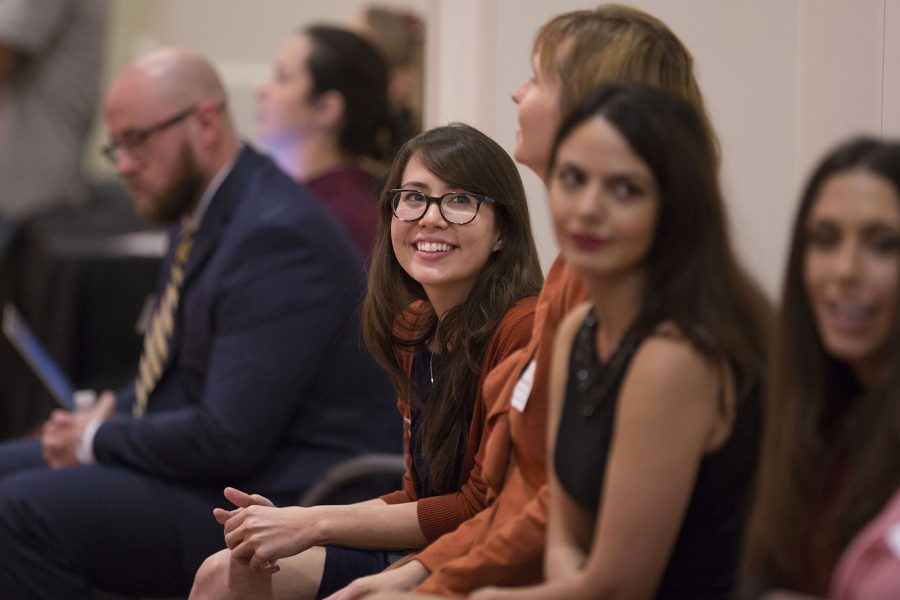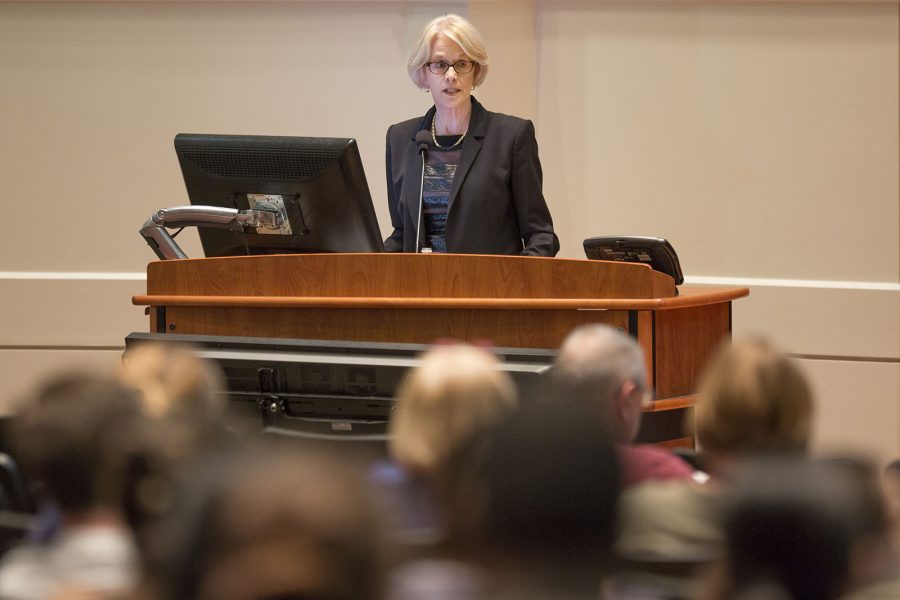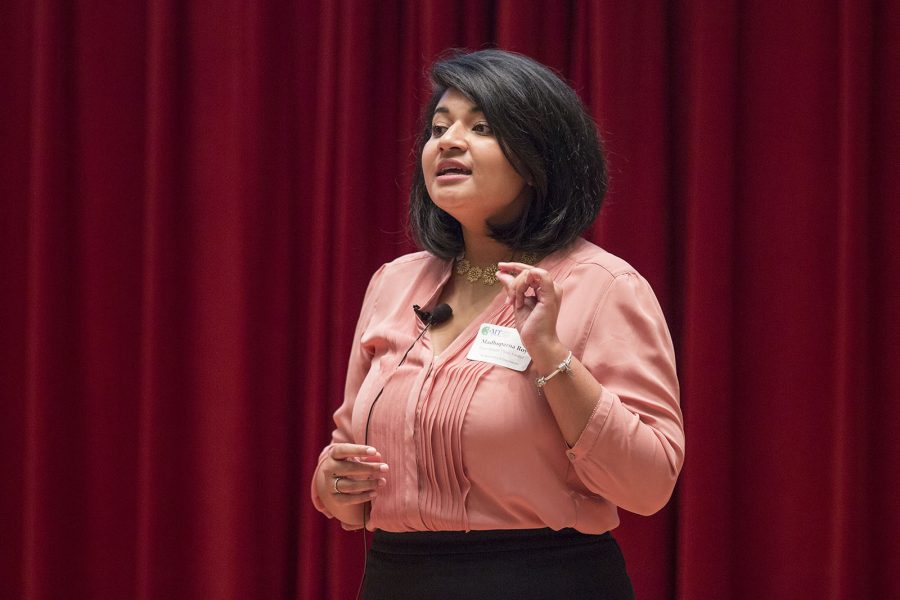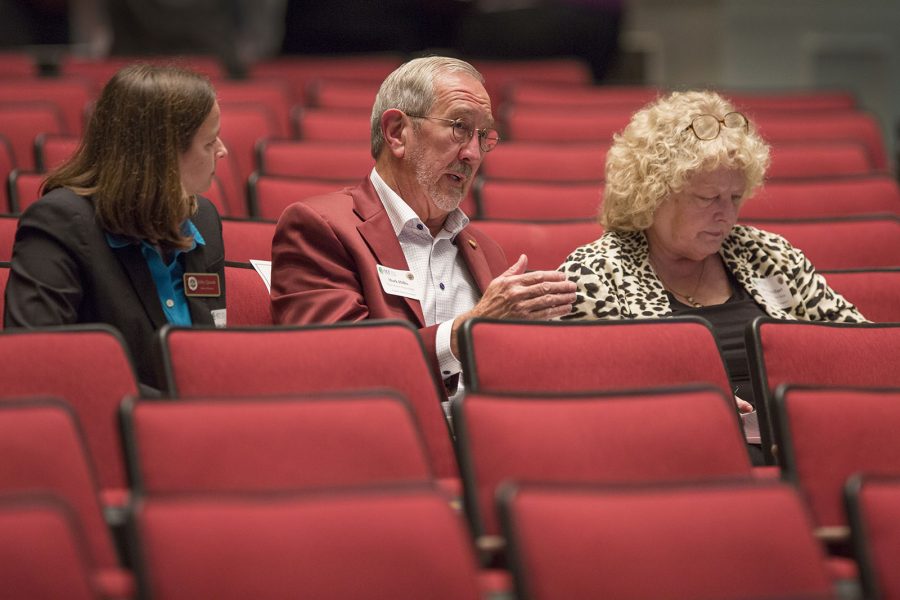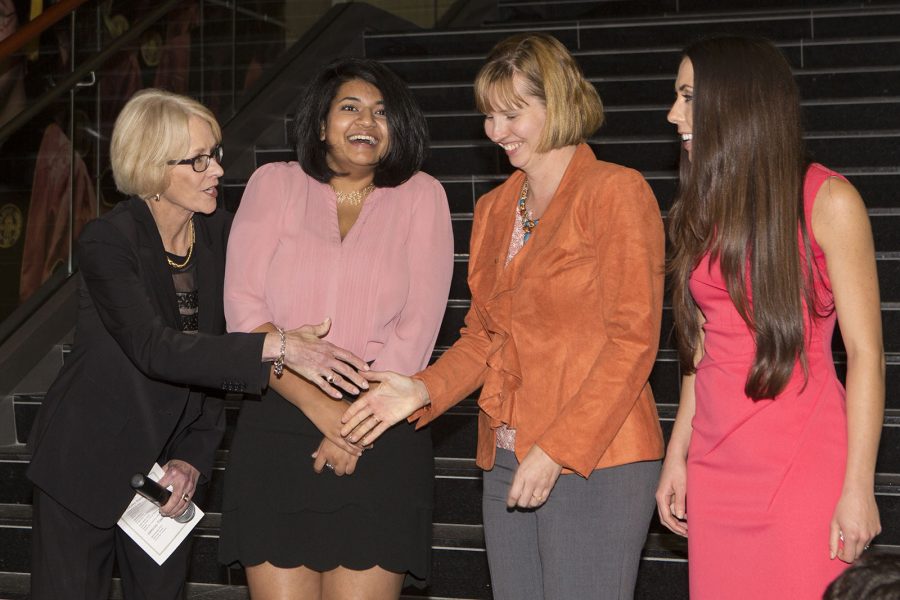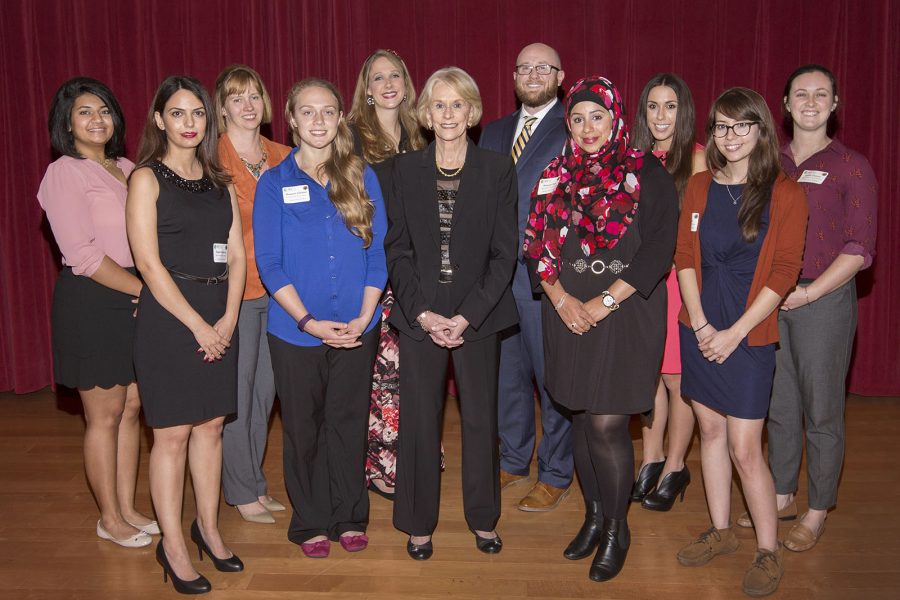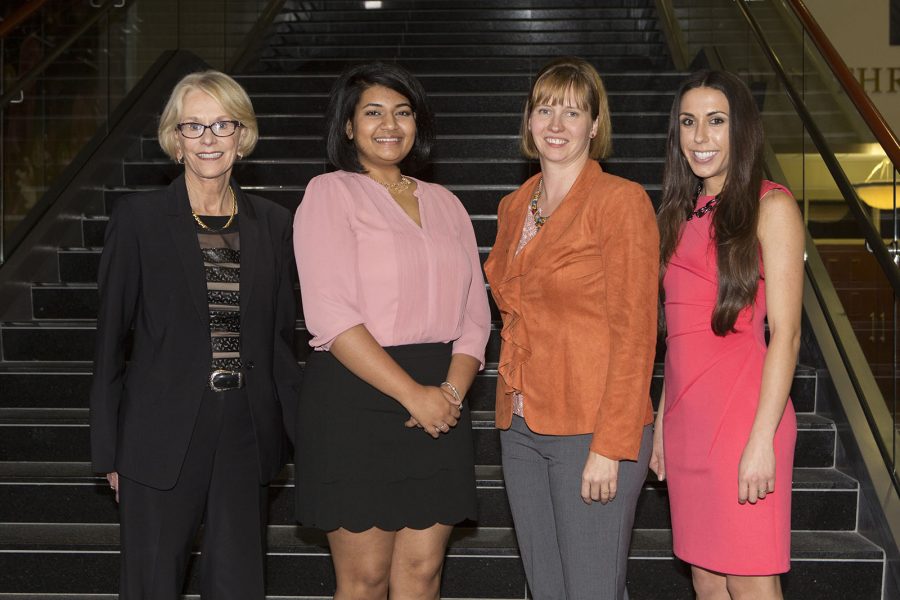
Florida State doctoral student Madhuparna Roy is the winner of the university’s 2016 Three Minute Thesis (3MT) competition.
Roy confidently walked on stage and without a hint of nervousness, explained to the crowd in the allotted three minutes how her research would make planes safer in stormy weather.
She aced it. Roy’s clear, succinct “elevator speech” won the competition in the Durell Peaden Auditorium in the College of Medicine Research Building on Nov. 29.
“I felt totally fine,” said Roy, who is earning a doctorate from the Department of Industrial and Manufacturing Engineering. “I was comfortable doing it and wasn’t nervous. I just enjoy my research. I love it. When you love something, it shows.”
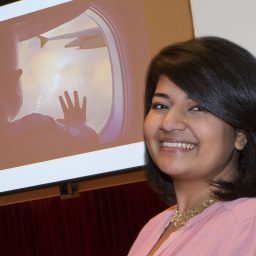
Roy was one of 10 finalists who embraced the challenge of distilling the voluminous research for their dissertations. An 80,000-word thesis would take about nine hours to present. These finalists had three minutes to explain their research in a simple, engaging way.
The competition, hosted by FSU’s Graduate School, judged students on comprehension, content, engagement and communication. Four judges listened intently and considered: Did the students make a persuasive case on the need for their idea? Did they make the topic understandable? Did they leave the audience wanting to know more?
Judy Devine, senior associate dean of The Graduate School, thought Roy met the challenge with grace under pressure and impressive expertise.
“Madhuparna really worked hard for this, as did the other finalists. But she articulated so beautifully and explained her research so the audience could understand. I really believe the audience wanted to know more.”
That was the case at this event. Roy’s topic resonated with everyone who books flights. She asked the audience: Are planes safe when they fly through thunderstorms? On average, she said, lightning strikes planes of every airliner at least once a year. While older planes are equipped with a heavy metal mesh to safely disperse electricity, newer models are constructed with composite materials because of their high strength and low weight. But there’s a downside: Composites don’t disperse lightning strikes as well as metal.
Roy’s doctoral research explores using new particles in composites to create better conductivity. In addition, she plans to use 3D printing and magnets to align particles in the most effective way to shield against electromagnetic interference.
Her Three Minute Thesis — called “3D Printed Airplanes: How Plastic Parts Are Replacing Metal” — described her plan to create stronger, lighter, safer planes.
“So you can keep calm when you fly,” Roy said.
She won $500 and the opportunity to compete in the regional competition in Annapolis, Md., at the Conference of Southern Graduate Schools next March.
Roy hopes to continue the streak of success that FSU doctoral students have demonstrated in recent regional 3MT competitions. Kimberly Smith, a doctoral student in FSU’s neuroscience program, won first place in March 2015.
Aniket Ingrole, a Ph.D. student in the Department of Industrial and Manufacturing Engineering, won FSU’s 2015 3MT competition and then went on to earn the top regional prize over 40 competitors.
Roy and Ingrole are friends. Last year, she watched him win and was inspired by his success. That experience prompted her to enter the 2016 3MT event.
“Preparing for it has been interesting because when you’re dealing with so many technical jargons, you have a hard time making it easier for people to understand what is the fundamental issue that you’re trying to solve,” Roy said. “It actually gave me a better insight into my project and trying to understand what exactly the problem is that I’m trying to fix.”
Devine said she was impressed as she watched the students prepare for the competition. She said they didn’t know each other before the event, but once together, they shared helpful tips. For Roy, it was an experience that revealed much about the personal generosity of these doctoral students.
“They’re competitors, but so what. They’re my friends. We’re all in the same boat.”
Shaleen Miller, a Ph.D. student in the department of urban and regional planning, won 2nd place for her idea to boost bicycle and pedestrian infrastructure, and develop consistent funding sources for the effort. She received a $350 prize.
Tania Reynolds of the department of psychology earned $250 for the “People’s Choice” award with her presentation: “Bless her heart! Is Apparent Concern Advantageous for Women’s Reputational Competition?”
Florida State’s 2016 Three Minute Thesis project attracted 28 participants. A team of judges watched the presentations and selected 10 finalists for this competition:
- Kate Carnevale, Chemistry and Biochemistry: Preparing for the Future – Using Nanoparticles to Make “Smart” Medicine
- Emily Darrow, Biological Science: Unraveling the Mysteries of the Inactive X Chromosome
- Brandon Grubbs, Nutrition, Food and Exercise Sciences: The Effects of Whole Body Vibration Exercise in Frail Older Adults
- Emily Lee, Biological Science: Finding a Small Molecule Drug for Zika Virus Infection
- Shaleen Miller, Urban and Regional Planning: Building and Funding Bicycle and Pedestrian Infrastructure
- Pegah Nasabian, Nutrition, Food and Exercise Sciences: Combined Effects of Bone Loss, Muscle Loss, and Obesity in Older Women
- Tania Reynolds, Psychology: Bless Her Heart! Is Apparent Concern Advantageous for Women’s Reputational Competition?
- Madhuparna Roy, Industrial and Manufacturing Engineering: 3D Printed Airplanes: How Plastic Parts are Replacing Metal
- Margaret Scheiner, Industrial and Manufacturing Engineering: Using Light to Create Self-Healing Structures
- Ibtissam Zaza, Business Administration: Promoting Information Technology Self-Service
The Three Minute Thesis competition was created by The University of Queensland, Australia in 2008. Today, similar events are held at more than 350 universities in about 20 countries.





